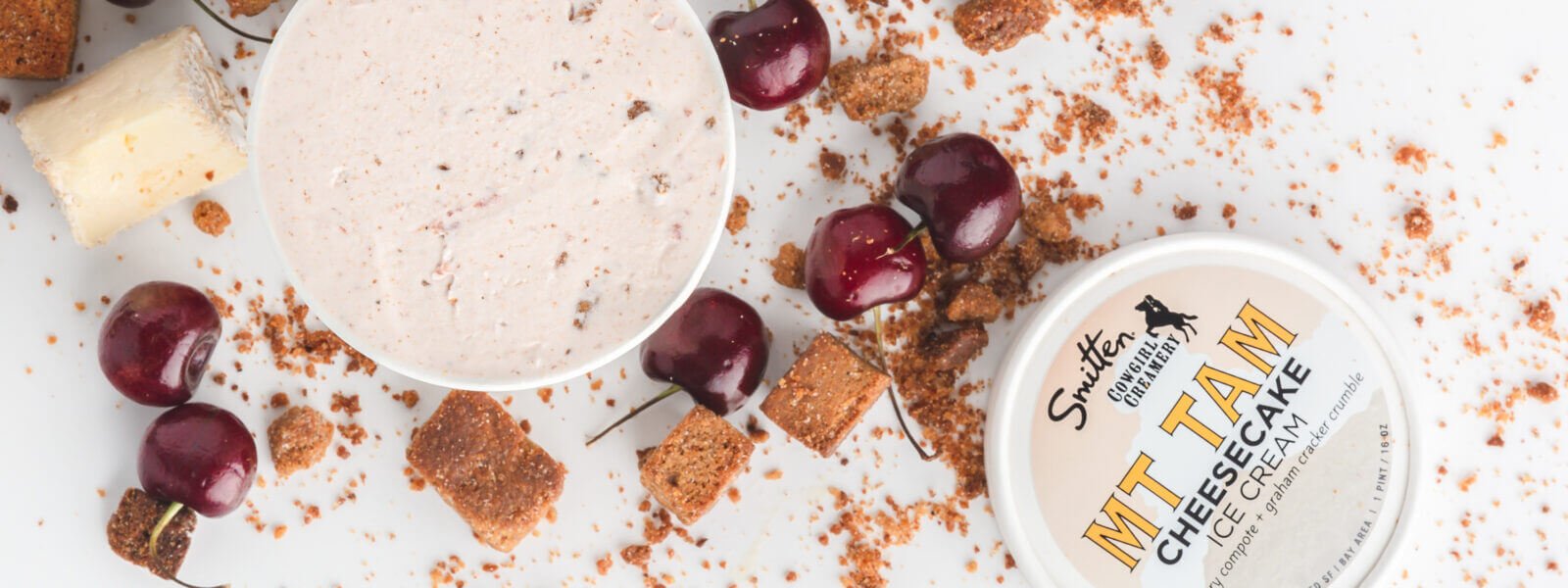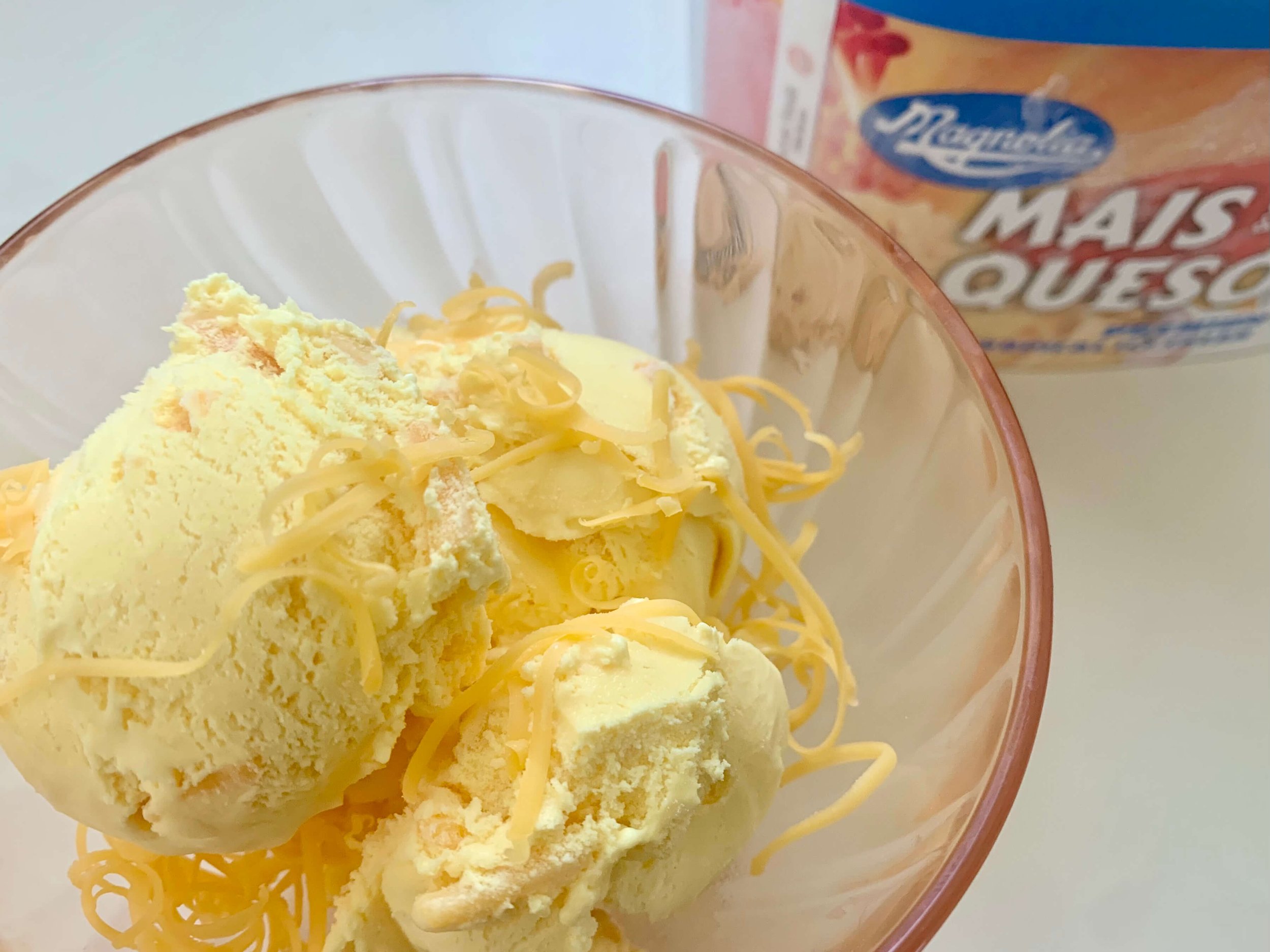The Surprisingly Cool Origins of Cheese Ice Cream in the Philippines
Smitten Mt. Tam Cheesecake
Let’s play some word association. If I say, “Cheese,” you say what? Plate? Crackers? Wine?
“Ice cream” may not be among your first answers. But that could need rethinking. Recently, several premium ice cream makers have partnered with artisan cheesemakers to fashion some cheese-inspired, creative ice cream combinations, such as Salt and Straw’s Pear and Blue Cheese with Rogue Creamery and Smitten‘s Mt. Tam Cheesecake with Cowgirl Creamery. In 2019, Humphry Slocombe collaborated with Laura Chenel and Domaine Carneros to make a limited run of Wine and Cheese ice cream.
But way before these nouveau cheese and ice cream pairings, one country’s residents had been enjoying golden scoops of cheese-flavored ice cream for over 50 years. In the steamy Philippines, ice cream has a long history. It was first introduced in the 1800s during the Spanish occupation, but just for the elites. Since that was before refrigeration, the precious dessert could only be enjoyed by those who could afford to import ice and employ servants to hand churn them the cooling treat.
The treaty signed after the Spanish-American war in 1898, conferred ownership of the Spanish colonies of Guam, Puerto Rico, and the Philippines to the United States. Once the Americans took over the occupation of the Philippines in the early 1900s, refrigeration eventually became widespread. The first ice cream parlor in Manila was founded in 1908 by an American who served the classic vanilla, strawberry, and chocolate.
Soon, local ice cream parlors proliferated, plus push carts that brought ice cream to the masses. What had started out as a delicacy in the mansions of the upper crust became a daily source of pleasure, as sorbeteros, ice cream vendors pushing colorful painted carts, served ice cream cones to the general population, and especially to the delight of kids, with flavors incorporating local ingredients such as mango, coconut, avocado and ube (purple yam). Originally, Filipino ice creams were made with the milk from the carabao, a domestic water buffalo, which is also used to make a soft white cheese called Kesong puti.
Cheddar cheese entered the scene with its importation to the Philippines after WWII and is now a common topping on a variety of pastries and the comforting dish called Filipino spaghetti. Cheddar cheese ice cream has become one of the country’s most popular flavors. Called queso or keso, the frozen confection is a juxtaposition of sweet and salty and may include corn kernels. It is often served with a matching scoop of ube ice cream, or sandwiched into a warm pandesal bread roll.
Family-owned Ramar Foods, in Pittsburg, California, has been making traditional Filipino treats for over 50 years. Three of the most popular flavors in their line of Magnolia Tropical Premium ice creams feature sharp cheddar cheese. Mais con Queso (which debuted in 1972) pairs sweet corn kernels with creamy cheese ice cream, Queso Queso (meaning “super cheesy,” has shards of salty cheese in creamy, cheese ice cream), and Ube Queso, which features cheese shards in scoops of the neon-purple yam, whose photogenic popularity has not yet waned.
Strategic market manager, Gabriel Quesada, a member of the family’s third generation, quips that Ramar foods is so dedicated to bringing these tastes of the Philippines to homesick Filipinos, plus introducing these flavors to the rest of the world, that the family name actually translates as “cheese-y.”
Ken Weiss, who oversees operations at Ramar Foods, which ships their ice creams across the country, mentions one intriguing challenge. “I sometimes get calls from microbial inspectors in other states, expressing concern that the bacteria count in our ice cream is ‘pretty high,’ says Weiss. “I have to remind them that this is cheese ice cream, and, of course, cheese has bacteria, but the good kind. They are always quick to apologize when they realize that.”
On her blog, Tummy Travels, Clarisse Panuelos, who grew up in the Philippines, declares that queso is her favorite flavor of ice cream and includes a recipe. Recounts Panuelos, “Growing up in Manila, it’s normal for us to see Mamang Sorbetero’s or ice cream vendors roaming the streets with their colorful carts. Inside are equally colorful ice cream flavors, but I always paid special attention to the queso ice cream. Depending on my mood, I’d order it in a cone, or a cup, or in a burger bun as a sandwich, and I would happily indulge in my queso ice cream as an after-school snack. Even when I was in high school, the obsession did not stop. I loved it enough to sneak some queso ice cream through the locker room windows of my high school whenever Mamang Sorbetero passed by. (We weren’t allowed to purchase from vendors outside during school hours!) There was just something about that sweet-salty-creamy combo that always got to me, and over 15 years later, queso ice cream still holds a special place in my heart.”
Panuelos and many others who grew up in the Philippines, use the phrase “dirty ice cream” to refer to the frozen treats sold by ice cream vendors. No one knows for sure, but several theories have been offered to explain this label. For example, “dirty” could refer to the fact that it was sold in the street, thus exposing it to the air, or possibly distinguishing it from factory-made ice cream. Panuelos wonders if the term “came from its ‘dirt-cheap price.’” Or maybe, posits another writer, it’s what parents called the treat to try and discourage their offspring from buying it. That pretext seems not to have worked.
strawberry blue cheese ice cream photo credit Romy Dorotan
Amy Besa and her husband Romy Dorotan own the popular Filipino restaurant Purple Yam in Brooklyn. Their menu always includes a dozen flavors of ice cream and sorbet. “Romy has experimented with Gorgonzola and local American blue cheeses with strawberries to make ice cream, and goat cheese also with strawberries,” says Besa. But, as is often the case when it comes to more creative Filipino chefs in working in the US, she adds, “It will take a long time for Filipinos to appreciate this type of ice cream we make. What they remember will be grated or melted [Kraft cheddar] cheese churned into the ice cream mix when it is being frozen.”
Whether it’s classic Filipino queso ice cream made with mass produced cheddar cheese or contemporary ice cream made with artisanal cheese, there’s no denying the appeal of cheese ice cream which offers an even more intensely satisfying combination of the creamy textures and milky, buttery and tangy flavors we crave.





